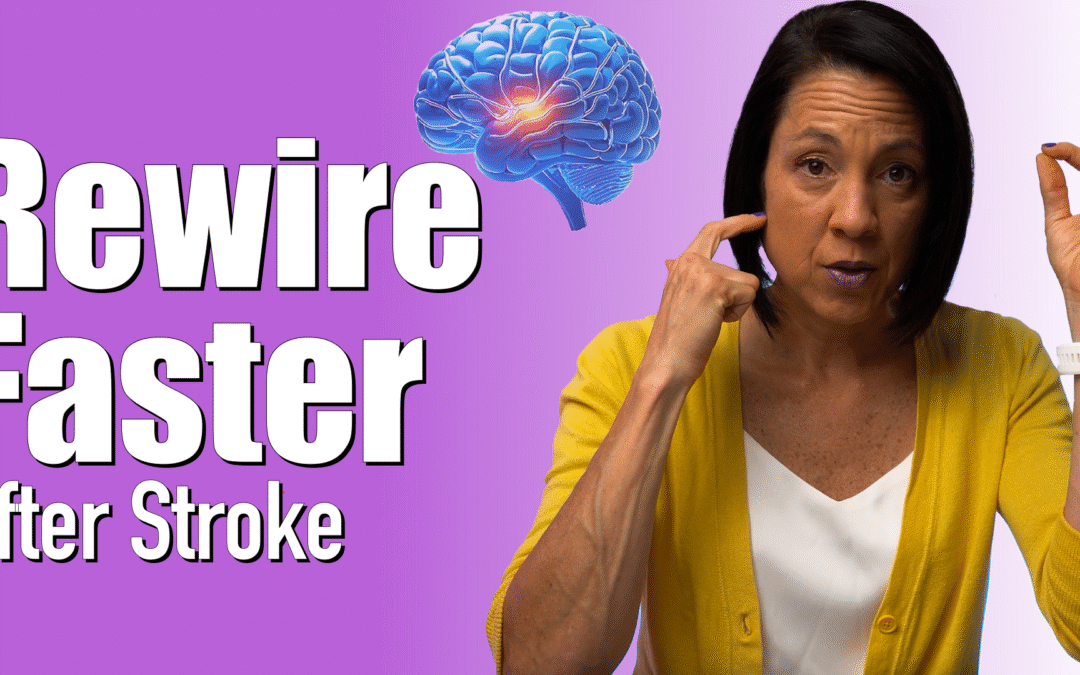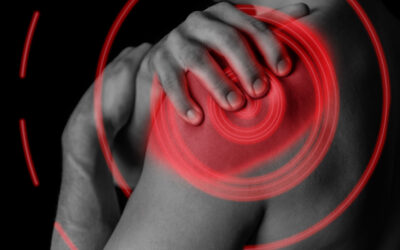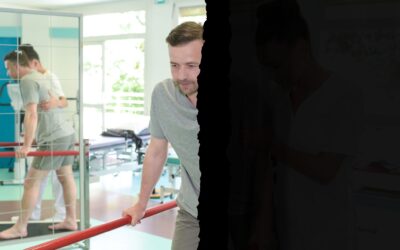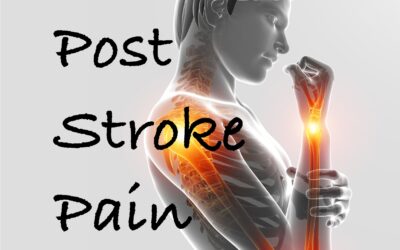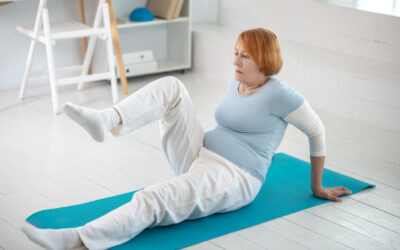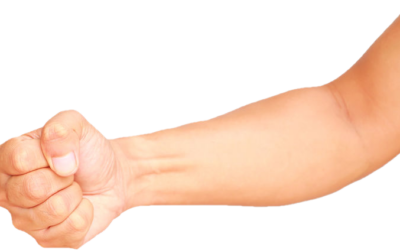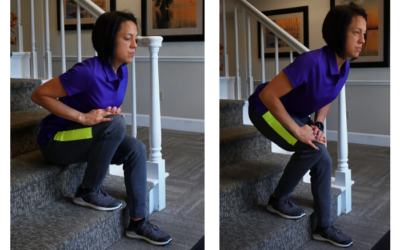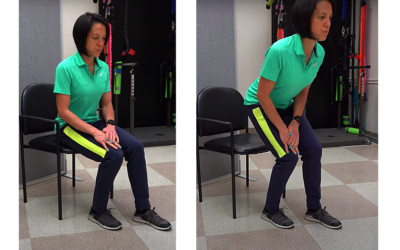Want to Rewire Your Brain Faster After Stroke? Try These 3 Habits
If you’ve been on this neuro-recovery journey, you know it can feel like progress is slow. You do your exercises, you follow instructions, but sometimes your brain seems… stubborn. I get it. I’ve seen it in hundreds of patients over 22 years. And here’s what I’ve learned: your brain responds best when you challenge it in new ways.
I want to share three brain habits that I’ve seen make a real difference. Habits that go beyond the usual exercises and can actually help your brain rewire faster. These aren’t just theory. I’ve used them in therapy sessions and at home programs with real patients, and the results are encouraging.
Habit #1 Novel Movement Challenges: Wake Your Brain Up
Your brain loves novelty. When you throw something new at it, it wakes up, pays attention, and gets primed to rewire.
Some of my favorite “novel movements” to incorporate:
- Walking backwards in a hallway (safely!)
- Walking on an unfamiliar or slightly uneven surface (safely, of course)
- Doing exercises that cross midline, this means reaching across your body:
- March and tap your opposite hand to your knee
- Stand still in a corner and reach for objects across your body
- Tap your foot across midline
Crossing midline is a game-changer. The first time I get a patient reaching across their body, it’s like a switch flips their brain just lights up in a whole new way.
Why does this work? Because repetitive and predictable exercises can make the brain go into “autopilot.” But when something feels unexpected, that’s when brain reorganization, the rewiring we want really happens.
Habit #2 Music and Rhythmic Movement: Let the Beat Guide You
If you’ve ever noticed it’s easier to move to music, you’re not imagining things. The motor areas of your brain (movement) and the auditory areas (hearing) are neighbors, and when they sync up, your movement quality improves.
One simple way to try this is to download a metronome app and clap, march, or step to the beat. Or make it fun by putting on your favorite song and walking or tapping along.
I’ve used this with patients who have Parkinson’s disease, but I’ve also seen it help stroke survivors and people with MS. There’s research to back this up too. Studies show that pairing rhythm with movement can improve motor function after neurologic injuries.
Habit #3 Visualization: Train Your Brain Even When You Can’t Move
If you’ve ever thought, “I can’t move my arm, so what’s the point?”, think again. Visualization, or mental practice, is a powerful tool in neuro-rehab.
Simply imagining movement activates the same motor areas in your brain as physically moving the limb. Functional MRI studies show that when you visualize your arm lifting or your leg stepping, the motor areas of your brain light up even if your body isn’t moving yet.
It doesn’t replace real movement, but it enhances it. Here’s how you can use it:
- Sit quietly and picture your arm or leg moving normally (walking, reaching, or picking up a cup)
- If your therapist or caregiver is moving your arm, don’t just sit there. Watch your arm and imagine yourself doing it
- Caregivers: guide the person’s attention to the moving limb it’s prime time for brain activation
Final Thoughts
Recovery isn’t only about grinding through exercises, it’s about engaging your brain in the right ways. By adding novelty, rhythm, and visualization into your daily routine, you can help your brain rewire faster and more effectively.
Here’s what I want you to remember:
Recovery is possible. Your brain is capable of more than you think. And sometimes, the little things, like walking backwards, moving to music, or picturing your arm reaching can make the biggest difference.
Try adding one habit today: maybe walk backwards safely in your living room, clap along to a song, or visualize moving your affected limb while resting. Small consistent steps make a huge difference over time.
I’d love to hear from you. Do you already use any of these habits in your recovery? Have you noticed changes when you move to music, or when you picture yourself moving? Share your experiences with us. I learn from you as much as you learn from me, and your story might help someone else take their recovery to the next level.
If you want more structured exercises, guided routines, and research-backed strategies, check out our membership plans. You get 24/7 access to curated home exercises, videos, and support to help you take full ownership of your recovery.
Articles you may be interested in
Frozen shoulder and its link to post stroke shoulder pain
Frozen shoulder, also called adhesive capsulitis is one of the most prevalent causes of post stroke shoulder pain. It is a condition that is characterized by shoulder joint stiffness and pain. Other neurologic injuries can also cause this condition. Such as multiple...
Hemineglect after a stroke: When half the world is missing
hemineglect is a condition where someone loses the ability to attend to, sense, and/or perceive information on one side. This condition is also referred to as unilateral neglect, spatial neglect, and/or hemispatial neglect. Several neurologic condition can cause this...
The Voice
Some call it intuition. Others might call it a “gut” feeling. And for those who believe in a higher power, “a direct message from God”. You know, that little voice that prompts you to take action. Yeah, that voice. In the past 20 years, I have had the pleasure of...
Post Stroke Pain: Diagnosis and Treatment
Pain is a common symptom after a stroke. Unfortunately, pain can be a significant barrier to regaining function. In some cases, there is an identifiable cause related to a movement or a structural problem. The rehab team can identify this, prescribe the...
Advanced Exercise: Walk without fear of falling
How do you regain the ability to walk without fear of falling? Fear of falling is a MAJOR concern for a lot of people. In the early stages of rehabilitation, the goal is to regain movement control at the hip, knee, and ankle. This is necessary to ensure that someone...
Tips for effective physical therapy at home after a stroke
An effective physical therapy program at home after a stroke is the most critical component for a successful recovery. I dare say MORE important than face to face time with your therapists. As someone who earns a living by treating patients (in person), this is a...
Blessings in disguise
Life isn’t always easy. I am probably not telling you anything you don’t already know. No one is exempt from challenges in life. Some go through more challenges than others. I have learned to be content with NOT (always) figuring out why. But I know that is not...
What Causes a Clenched Hand After a Stroke
A stroke can cause a wide range of problems in the arm. One of the major causes of disability after a stroke is a clenched hand. The most common cause for a clenched fist is spasticity. If left “unmanaged”, spasticity creates muscle shortening which will result in...
Regain Normal Walking After a Stroke: Advanced
A common goal after a stroke or a brain injury is to regain "normal walking". However, this goal is not limited to just those who have suffered a stroke. I dare say it is the number one goal of almost everyone who has suffered an injury to their neurologic system. ...
Stand and Walk After a Stroke: Intermediate Progression
Many want to stand and walk after a stroke. Of course, this is critical in giving someone more independence. However, standing and walking is also important to prevent deconditioning, maintain joint health, and prevent postural abnormalities associated with prolonged...

